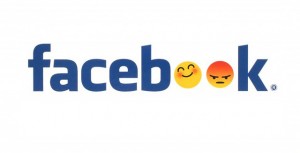The From Line
What’s the best way to get heavy foot traffic to your new cafe in New York City?
a) Rent a property right next to major tourist attractions and build your cafe there
b) Buy a property out of the way of tourist attractions and build your cafe there
(Yes, obviously buying a property next to major tourist attractions would be the best move, but you don’t have that kind of money.)
Here we face the dilemma of the “long short road” and the “short long road.”
Native advertising is a tough nut to crack. It’s not just black and white. While it is one of the fastest growing advertising segments, a lot of publishers are still in the dark when it comes to the wide spectrum of native advertising.
By definition, native advertising is a form of paid media where the ad experience follows the natural form and function of the user experience in which it is placed. Native advertising is NOT content marketing. There’s a big difference. Content marketing is a type of advertising message while native advertising, is a type of distribution.
Everyone knows that the key to any successful email program is subscriber engagement. The same goes for email monetization. The challenge lies in training your subscribers to engage, not just "skim" through your emails without any action. Ensuring your subscribers click is paramount to your monetization success. Subscribers should know exactly where to locate value quickly and click on it.
When you do not provide constant and multiple ways to engage, you are leaving money on the table. There are four main components required to train your subscriber's to engage. It's easy to remember them, D.A.R.T.
About This Infographic:
Despite the fact that publishers and advertisers can agree on what native advertising is in its legacy print format, there’s still much confusion in the industry when native advertising transcends the digital space. Gold Lasso believes the reason for this confusion stems from the sheer number of variables that can be manipulated in a digital ad. To help publishers and advertisers wrap their heads around what defines a native ad, we developed this simple scale that takes into consideration both publisher and advertiser standards and characteristics. The scale demonstrates that native ads are defined by the degree that advertisers relinquish creative and formatting control to the publisher. Are some ads more native than others? We think so.
Use This Graphic for FREE on Your Site!
You may use the infographic above on your website, however, the license we grant to you requires that you properly and correctly attribute the work to us with a link back to our website by using the following embed code.
href="/images/easyblog_articles/368/b2ap3_thumbnail_native-scale.png" target=" "_blank">img src="/imaes/easyblog_articles/368/b2ap3_thumbnail_native-scale.png" alt=" "infographic" width="430" />
Click to Enlarge
Via Gold Lasso, Subscriber Engagement & Monetization Systems
Infographic Thumbnail

As published in MediaPost
Native ads are hot! This controversial yet ultra-effective tactic of blending content, advertisement, and placement is heading straight for consumers' inboxes. With a firm hold on the social channel, native ads are quickly making their way to the email channel where they are a natural fit for mobile newsletter formats. Despite the initial success of native ads, many email publishers are fumbling with their implementation and optimization. Here's some help.
Eye Movement
The successful implementation of native ads in email starts with the format of the email message itself. Email formats are now highly influenced by the success of social media on mobile devices. For example, Facebook made a fairly smooth transition from desktop to mobile, as it was able to scale the value of its social stream to a smaller format. The same challenge for email is achieved via adaptive design, compacting all of an email's content into one narrow column. This one -olumn format significantly increases an email's legibility and engagement, especially on mobile devices, by allowing a subscriber's eye to effortlessly scan from left to right while scrolling.
Native Art
Ideally, all aspects of a native ad's format should be identical to the main content, with the exception of disclosures and labeling. This includes headlines, colors, fonts, image sizes and any other characteristics of the email's native design and format. While some might consider the prior suggestion controversial and even counterintuitive to traditional journalism ethics, others argue that when publishers adopt native ad formats, they send subscribers a message that this content is advertising -- and that their editorial is equally important to their business. After all, you can't have quality content without a solid revenue base to support it. Regardless of your stance, there should be no argument on proper and visible advertising disclosures.
Placement Science
To maximize return on native ads, placement becomes just as critical as format. When using a one-column format, native ad placement in email is easy, yet should be tested extensively while ignoring intuition. An example of letting intuition trump science is not placing a native ad at the top of an email's news stream because an advertisement as a top story goes against the norm. Despite whether this is true or not, publishers who rely on science for placement always fare better then the ones who rely on old-school intuition.
Contextual vs. Personal
Contextual and personal native ads are the two types publishers are currently experimenting with in email. Contextual is easier to implement, as there are fewer targeting and content variables to consider. Personalized content, on the other hand, is much more difficult, since publishers need to be armed with both a deep and diverse ad inventory, as well as with individual targeting capabilities. Unless you are a publisher of a micro-niche subject, it's been proven that personalized native ads mostly outperform contextual ones.
As always, email eventually finds a comfortable role whenever there's a digital media transformation. For now, email is successfully providing extended reach for native ads, while facilitating targeting and testing, resulting in additional publisher revenue.
Elie Ashery is the CEO of Gold Lasso and an adjunct professor at the Robert H. Smith School of Business.





